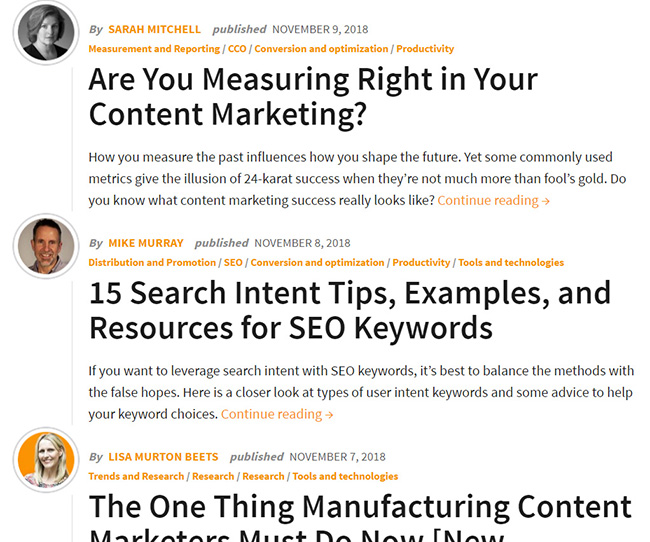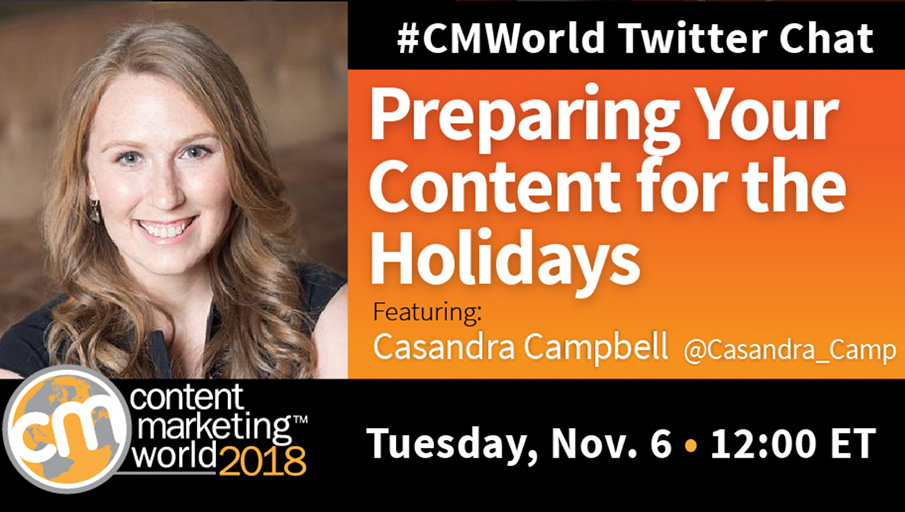Content marketing is such a highly effective strategy to raise event awareness and drive attendance that Content Marketing World, a conference largely built on content marketing strategies, was acquired by UBM—a marketing services and communications company—for around $17 million.
I’ve spoken at Content Marketing World a few times, I’m listed as one of its top 100 influencers and I work on content marketing projects for Meetings Today and its parent company, Stamats Business Media, daily. I’m happy to share some tips with you on how to use content marketing in event planning, and actually will speak on the topic at IBTM World in Barcelona.
First, how do I define content marketing for event planners? It is a strategy in which conference organizers create specific content that is relevant to their target audience (the prospective attendees) and presented in a way that is informational and educational to those prospects.
Then, of course, the created content for your event or meeting also offers calls to action to attend the conference, buy a video pass or move down the funnel in some other manner.
Content marketing is especially relevant to association planners, whose organizations often rely on the attendance at their major events to bring in a significant amount—if not the majority—of their annual revenue. So, let’s get started. Here are my top tips on how to begin:
Develop Your Content Marketing Strategy
Determine the unique value proposition of your conference. Why do your attendees decided to come to your event(s), and what problem are you solving for them?
In the case of Content Marketing World, the problem it solves is as follows: The marketing field is changing so quickly and it’s difficult to keep up. The conference covers new tools, current tools and the latest updates on what content marketers care about.
Content Marketing World also does this on its blog, where posts are shared daily on related topics. Many of those posts rank high in search results when people search on Google. Over time, this educational content builds a relationship with the audience/event prospects.
When done well, this sharing of content drives attendance to its event.

Content Marketing Institute Blog Screenshot
Set Your Content Marketing Goals
While this step seems obvious, it often can be missed. We typically recommend setting goals focused on conversions. That means the ultimate goal of an article is for the reader to do something else.
It’s important to keep in mind that it’s a bit of a numbers game, too. If you have two visitors, chances are they aren’t all going to convert. Maybe 10 of 100 will, or five of 100.
Here’s an example from Meetings Today. We did a webinar on social media strategy and wanted to drive traffic and attendance. Our chief content director, Tyler Davidson, wrote this very informational article on social media strategy. As a person interested in strategy like this, I found it useful.
By the way, here’s a webinar on the topic, which we also teased at the end of the article.
Refine Your Content Marketing Plan
Create Participant Personas: Knowing your target customer is a highly effective, established and accepted method in marketing today. Sometimes, clients tell us, “We know our personas,” and certainly many event planners do know or have an idea of what types of people make up their core audience.
Still, we’ve found it useful to write your personas down. Give them a name.
Describe them, similar to this example for Buildings, the sister publication of Meetings Today that produces content for the facility management industry and for building owners:
SAMPLE PERSONA NO. 1
NAME: Carl Commercial
JOB TYPE: Building development firm CEO for an office building
DEMOGRAPHICS: Male, lives in the east-north central region of the U.S., mid-50s
GOALS AND CHALLENGES: Get information quickly, doesn’t have a lot of time to devote to any one topic. Likes shorter articles with links to more information. Main focuses are return on investment, how to update on a small budget and manage everything at a high level.
PROBLEMS WE CAN SOLVE: Helping make the financial case for challenges, especially with case studies and numbers. Providing short articles that are concise but offer more reading if interested.
SAMPLE PERSONA NO. 2
NAME: Patrick Public
JOB TYPE: Manager of facilities for public and institutional buildings
DEMOGRAPHICS: Male, has a bachelor’s degree, lives in the mid-Atlantic region of the U.S., late-30s. Has knowledge in a lot of different areas related to facilities and manages multiple buildings.
GOALS AND CHALLENGES: A set, limited budget is his biggest challenge and always top of mind, especially since he has to respond to public pressure and approval. Because of this, he’s interested in how to keep utility costs flat, if he can defer maintenance and, once he’s having to upgrade if it will be up to code next year. He likes knowing about new technology, innovations and products, (etc.)…
I would highly recommend basing participant personas on as much on data as possible, but you might also make some educated guesses based on what you’ve heard in the market. The key is to write it down.
If it’s not written down, you don’t have personas—you just have ideas. Creating content for personas based on recollection is much harder, plus recollection can vary between people on the team.
Once the personas are documented, use them to create content. Writers could say, “What is the topic this persona would care about?” Then, once that’s determined, the content is created.
You can even tag your personas on each article to reinforce that this method will work for them.
I’ve found this strategy to be effective because not all stories are of value to everyone. When we can match our stories to readers’ intent and interest—especially the relevant readers—it’s highly effective.
Create a Content Calendar (And Stick With It): Getting on a calendar to produce content at regular intervals is extremely helpful to make your content marketing strategy a long-game success.
I used to recommend that one longer piece of content was a good pace per week. Others are now arguing (and they have some numbers to back it up) that four times per week is the right amount.
The answer, like many things in content marketing, is probably somewhere in the middle.
Determine Content Channels: I highly recommend building your content kingdom on your website—real estate that you own—and not just on a social media channel. I’ve seen YouTubers who were successful there, until YouTube changed some rules. Remember Blab, Vine, Google+? MySpace, anyone?
The Content Marketing Institute team also does a weekly Twitter chat, which helps them share even more informational content and engage with content marketers on another platform.

Content Marketing World Twitter Chat Promo Image
Content Marketing Drives Results Over Time
Content marketing isn’t a quick fix by any stretch of the imagination.
There are ways to accelerate success, certainly, but I’ve found the most successful programs to be those that don’t see it as separate campaigns, but as an ongoing project.
Sometimes, I like to refer to content marketing as a way of life. One campaign might not be successful, but campaign after campaign after campaign can be cumulative.
Our brand shares the stories our readers are looking for. And when it’s relevant to them, they buy what we are selling. For some companies, that is some kind of product; for consultants, it’s often their advice.
For event professionals, it’s raising awareness and driving attendance.
Still not sure where to start? Click the image below for more guidance.







